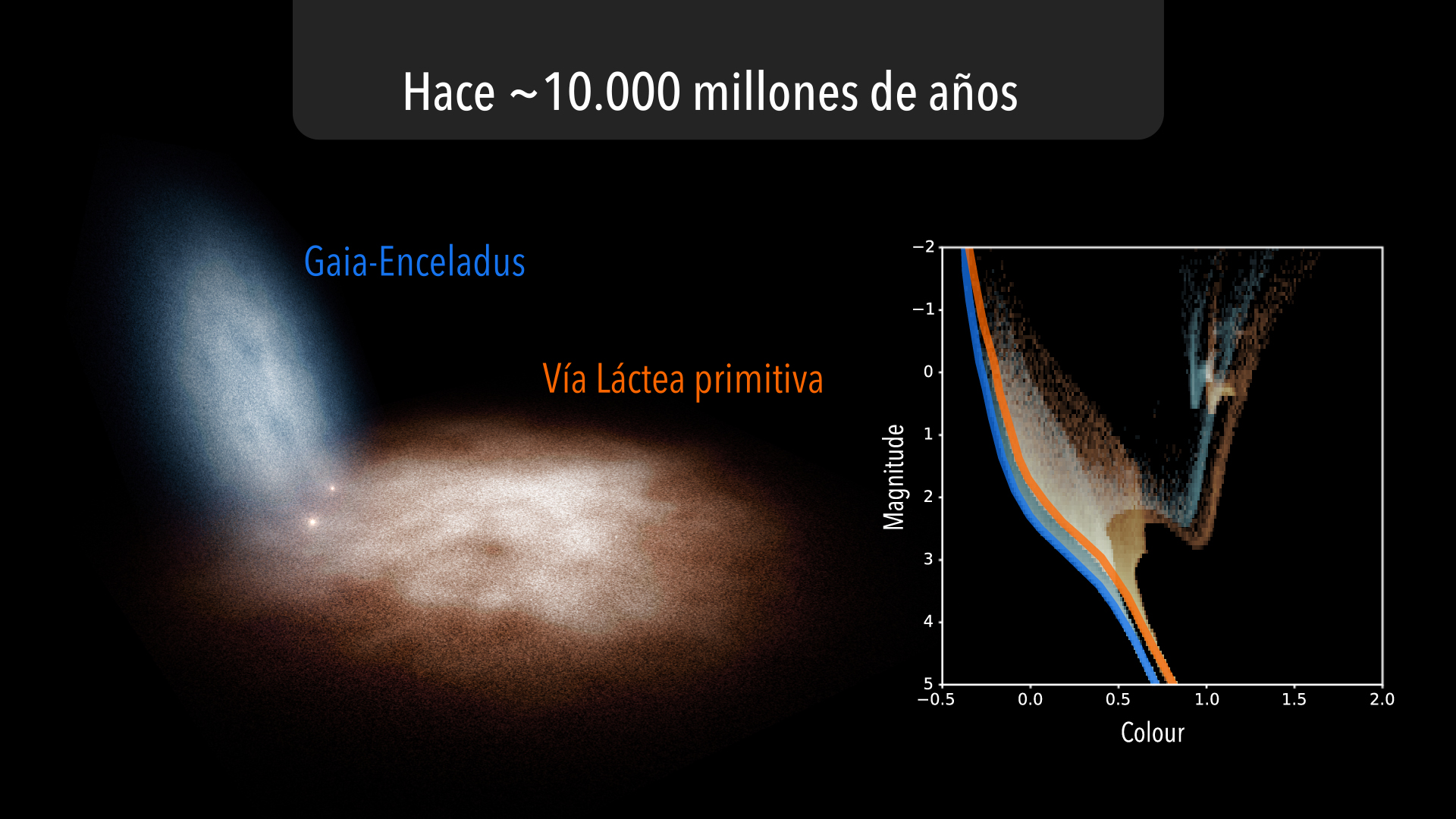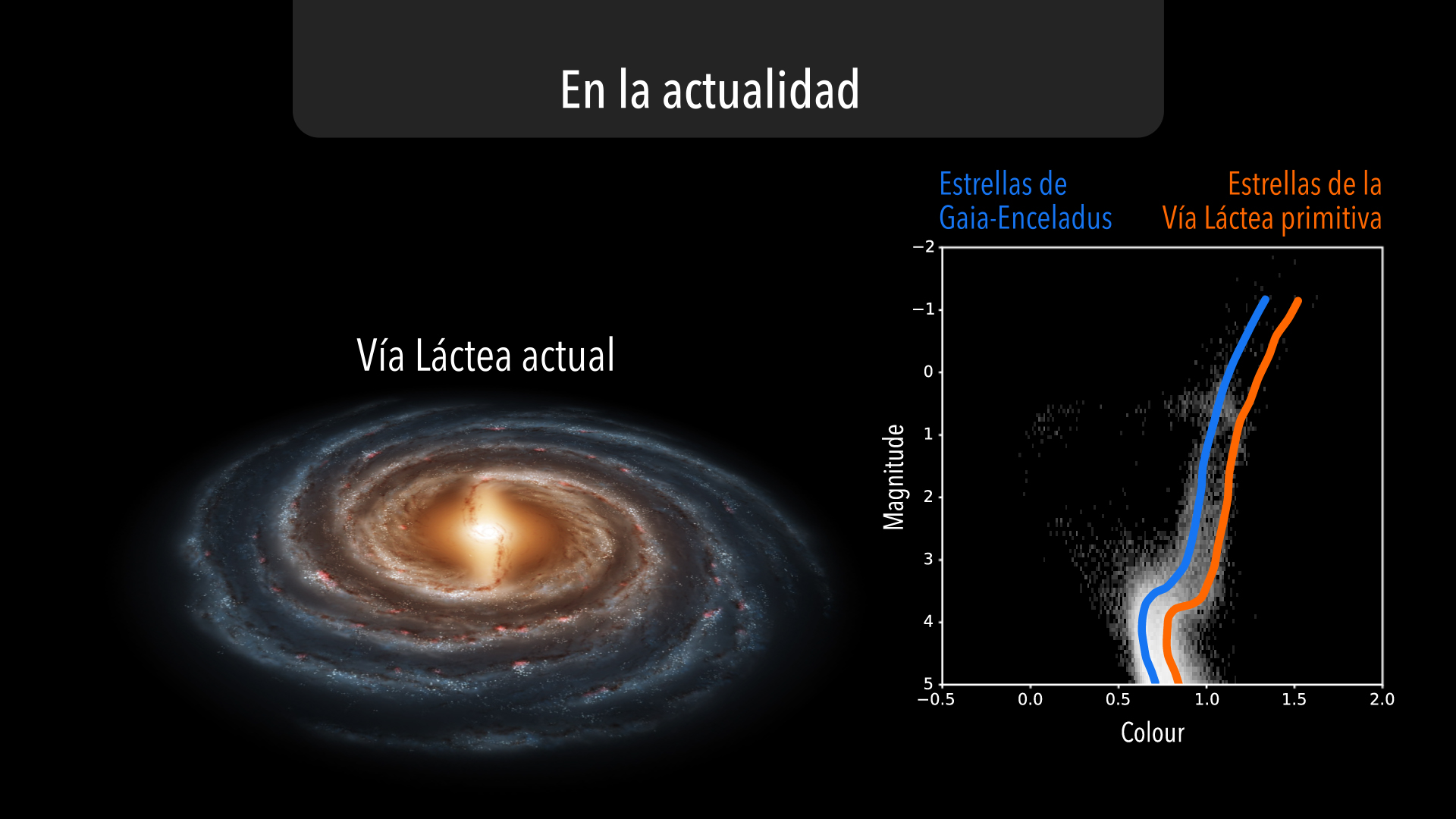How our Milky Way was born
13 billion years ago, the universe looked quite different. Stars formed in rapid sequence and joined to form dwarf galaxies that grew bigger through collisions with each other, in order to finally become the massive galaxies we see today. Our Milky Way was formed through a similar process.
Spanish researchers at the Instituto de Astrofísica de Canarias (IAC) have now succeeded in retracing the development of our home galaxy using data from the Gaia satellite. To do this, the astronomers compared the position, brightness, and distance of a million stars within a 6,500 light-year sphere. In this way, they could arrange the stars into several components: the stellar halo (a spherical structure surrounding spiral galaxies) and the thick disk in the center. Earlier studies have already shown that the halo consists of two different components, with one component being more strongly dominated by blue stars than the other. The blue component has been attributed to a dwarf galaxy named Gaia-Enceladus.
In their paper, the researchers were now able to decipher the complete history of the formation of the Milky Way, among other things, by an analysis of the metallicity (the metal content) of the red component. Gaia-Enceladus and the predecessor of our galaxy, which must have been approximately four times bigger than Gaia-Enceladus and considerably richer in metals, were formed 13 billion years ago. Then, ten billion years ago, the two galaxies merged. Many of the stars from Gaia-Enceladus were deflected into chaotic orbits and formed the halo. The collision also led to true outbursts of star formation, because the material brought along by Gaia-Enceladus mixed with the disk of our galaxy. This merger was completed only approximately six billion years ago.

